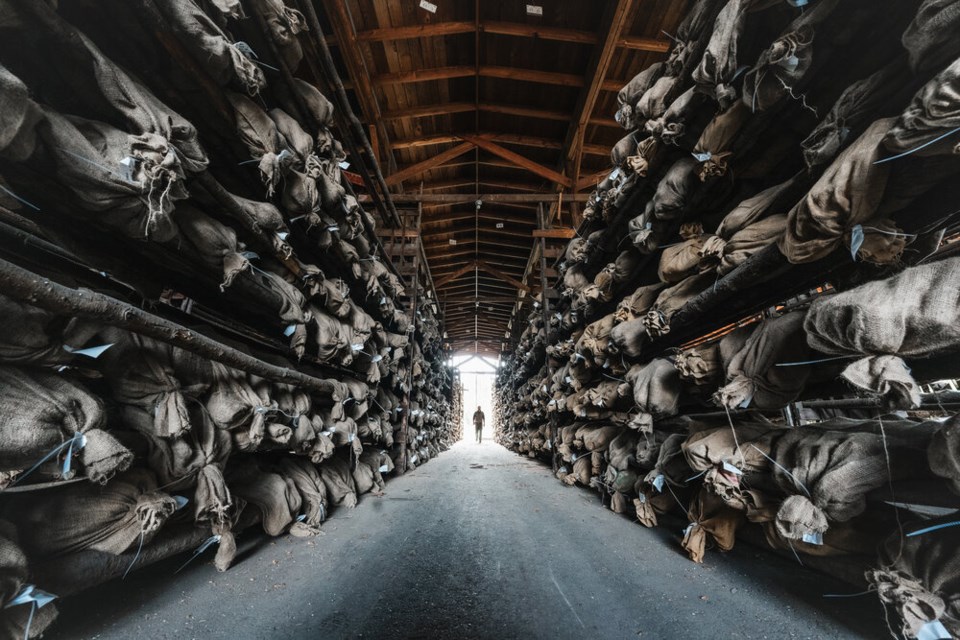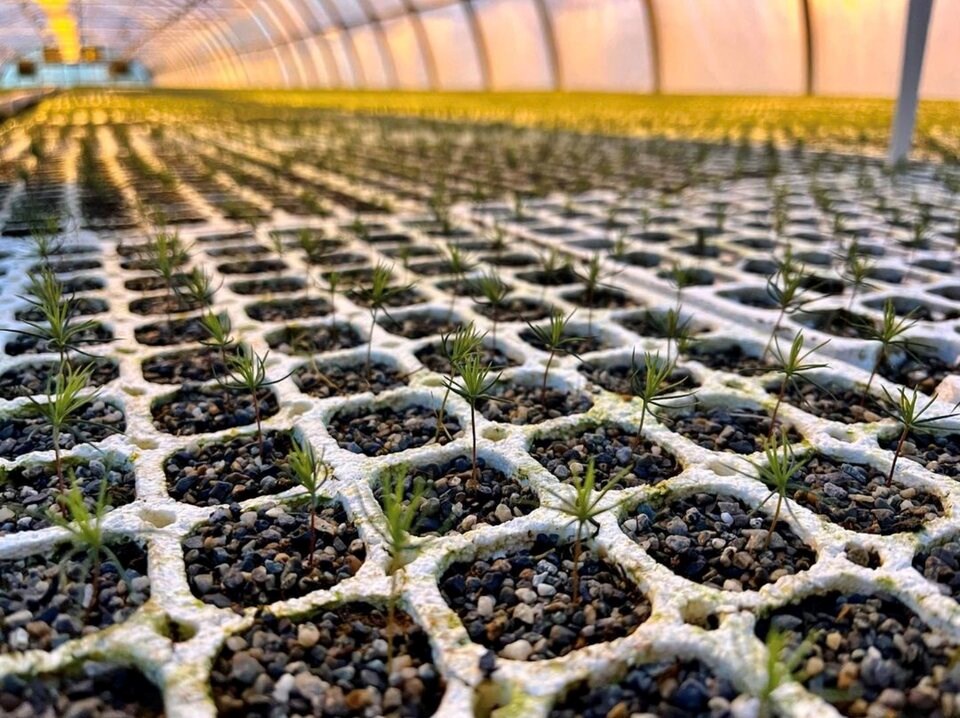The B.C. government says it’s moving to eliminate single-use plastic wraps currently used to plant 45 million tree seedlings across the province every year.
Traditionally, forestry companies have taken the equivalent of cellophane and wrapped the root bundles three or four turns to hold them together for transportation into the field. But that old way of doing things has been recognized as unnecessary in recent years, says Randy Fournier, chief executive officer of the B.C.-based seedling company PRT Growing Services Ltd.
“The elimination of plastic wrap, quite frankly, is just an elimination of waste. It's got obviously a fossil fuel, carbon footprint to it. But at the end of the day, it is something that is long past its due date of an absolute necessity,” Fournier said.
“We’ve just got rid of a habit to the benefit of everybody.”
Fournier says compacting peat around the seedlings provides enough density for the root system to hold together and keep seedling bundles of up to 20 trees alive before they are planted.
The decision to do away with the plastic seedling wraps comes after BC Timber Sales (BCTS) carried out a successful trial using pine and spruce seedlings in the Cariboo region. The change to BCTS’s supply chain will wipe out the use of three million seedling wraps a year, said the B.C. government in an Oct. 3 release.
Run out of the Ministry of Forests, BCTS manages and auctions off about a fifth of B.C.'s forests approved for logging every year, making it the largest forest tenure holder and largest customer of tree seedlings in the province.
National tree planting plan faces organizational hurdles
The B.C. government's announcement to make tree planting more sustainable comes almost three years into the federal government's program to reduce carbon emissions and improve climate adaptation by planting two billion trees across Canada by 2030.
That plan, however, has already faced significant hurdles. An April 2023 audit from the Commissioner of the Environment and Sustainable Development found delays in signing agreements meant Natural Resources Canada fell well short of its 2022 planting goal, a delay that is expected to create a knock-on effect over the coming years. The result: the federal government is “unlikely” to reach its targets.

As the largest tree seedling company in North America, PRT Growing Services Ltd. has 12 facilities across B.C. alone. That makes it a key player in both provincial and federal efforts to ramp up tree planting over the coming decade.
Nurseries don’t face a capacity limitation to support the program, according to Fournier. What’s required, he said, is simply good planning and foresight. For every year the government fails to hit its planting target, the larger the demand will be on nurseries to raise seedlings and make up for a growing backlog.
“From a capacity standpoint, could you grow enough trees in Canada and supply them for planting? Absolutely,” Fournier said. “But whether it's a baby or a seedling, it takes nine months to grow it, and that's the disconnect.”
“What we're creating is a self fulfilling prophecy.”





